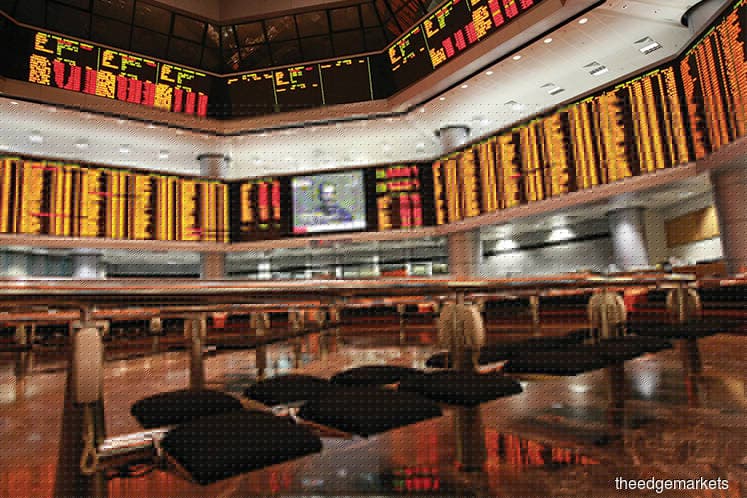
This article first appeared in The Edge Financial Daily on July 12, 2018
KUALA LUMPUR: As stocks across Asia slumped yesterday amid mounting trade war fears, analysts say more volatility can be expected in Bursa Malaysia and other markets.
Yesterday’s sell-off came amid an escalation of the US-China trade dispute after the Trump administration threatened to impose new tariffs on US$200 billion (RM806 billion) worth of Chinese imports.
CIMB-Principal Asset Management Bhd chief investment officer, Malaysia, Patrick Chang said the dispute will lead to more volatility but it may not cause a bear market.
“Bear markets happen when there is protracted earnings disappointment or protracted economic decline which is not our base case right now,” Chang told The Edge Financial Daily.
He is hopeful that sensibility will eventually prevail although China is likely to initially respond in kind by increasing its own tariffs, rescinding recent tariff cuts for US businesses, and quietly targeting US businesses in China.
Chang, however, noted that on the local front, the FBM KLCI remains fairly resilient after recent falls and remains a defensive market.
“With ample local liquidity from domestic pension funds and local asset management companies cashed up, we maintain our view that [the] downside will remain well supported relative to other north Asian markets,” he said.
Saturna Sdn Bhd senior equity analyst Zahid Siddique expects the equity market in the region, including Malaysia, to be volatile in the next three to six months amid the uncertainties from the escalating trade conflict.
Siddique said the ringgit will also be affected, partly because of the rising interest rates in the US as well as the uncertainties from the trade tariffs. But he is positive of the long-term growth in Asia as its population will continue to grow and there will be an increasing middle class.
“We still have cash and will gradually buy into the market,” he added.
Huang Juin Hao, a senior portfolio manager at Affin Hwang Asset Management, said the ringgit’s recent weakness and the underperformance of equities in emerging markets (EMs) are signs that the initial US$50 billion tariff imposed by the US on Chinese goods has been priced in.
Huang, however, said the latest US$200 billion tariff, which would only occur after Aug 30, has not been priced into the market. “This represents added uncertainty and, in the near term, the increased uncertainty will lead to volatile markets,” he said.
On a positive note, Huang said that most MSCI Emerging Markets Index funds have been underweighted on equity since the initial de-risking move in June and would have significantly increased their cash holdings, while the next stage of escalation is likely to only occur in September.
“We believe selective opportunities exist for domestic-driven sectors which are insulated from the fallout of trade tariffs. We are medium- to longer-term positive on domestic utilities and education, while in the short-medium term, we are positive on energy,” he said of the sectors to enter into the EMs.
Lukman Otunuga, research analyst at foreign exchange broker FXTM, said the growing risk aversion and market uncertainty are likely to punish EMs including Malaysia.
Despite the recent fund outflow seen in Malaysia, he believes escalating trade tensions are likely to dampen further the appetite for EMs’ currencies and equity markets.
“With an appreciating dollar adding to the EM pain and accelerating capital outflows, the ringgit like many other emerging market currencies could face further punishment,” he said.
Otunuga said the ringgit’s weakness or potential fall in the local stock market may be based primarily on external factors — namely, trade tensions and the strength of the US dollar, adding that the Malaysian economy remains encouraging.
CIMB’s Chang, however, believes that the US dollar rally seen so far is more of a flight to safety and that a protracted trade war is unlikely.
“This is not our base case as we believe this trade war is a means of the US negotiating for intellectual property protection and more market opening measures in China. The US has already granted exemptions to 67% of US steel imports. Ultimately, the US’ focus is on high-value industries that it competes with China such as automation, biotech, electric vehicles,” he said.
UOB Malaysia senior economist Julia Goh said it is too early to assess the impact of the trade tariffs on the economy and that the full impact is likely to be felt only in 2019.
“It’s too early to size up the impact of the tariffs as yet given many moving parts. For one there could be exclusions, and potential trade diversions that soften the blow. But uncertainty will definitely keep sentiment cautious which could affect growth in the near term,” Goh said.
She said the latest monetary policy statement by Bank Negara Malaysia also appeared to be more dovish and thinks that the central bank is in a wait-and-see mode.
“For now, a steady growth path supported by sustained domestic demand and buffered by net exports should keep the policy rate flat. The future path of rates hinges on global trade and investment developments, ongoing global monetary normalisation and domestic policy reforms,” she added.
In the event of a prolonged trade tension, Siddique from Saturna believes that Malaysia could be a viable alternative as a manufacturing hub for some of the US companies.
“At the moment, there are already companies looking at Asean as an alternative [to China] as seen by some companies setting up manufacturing plants in Thailand and Vietnam. Yes, Malaysia could be an interesting option,” he said.